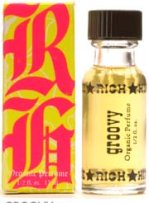
In 1927, Jeanne Lanvin asked André Fraysse to create a perfume for her daughter’s 30th birthday. Fraysse was only 27 years old, but with Paul Vacher’s help he created what is often recognized as the second great aldehydic floral fragrance, and one of the five most esteemed in the world: Arpège.
Hubert Fraysse reformulated Arpège in 1993. I haven’t smelled the original Arpège, but the consensus seems to be that the reformulation is a respectful play on the original. Combining Osmoz and Basenotes’s information for the newest version of Arpège yields topnotes of aldehydes, bergamot, neroli, and peach; a heart of jasmine, rose, lily of the valley, ylang ylang, coriander, and tuberose; and a base of sandalwood, vanilla, tuberose, vetiver, patchouli, and styrax.
Where Chanel No. 5 is languid, Arpège is full-bodied. If No. 5 is a vase of summer flowers, then Arpège is that same vase three days later, flowers ripe and spicy, with a dirtier base…
